6 Reasons Texas Roadhouse's 'Legendary' Steaks Are So Cheap
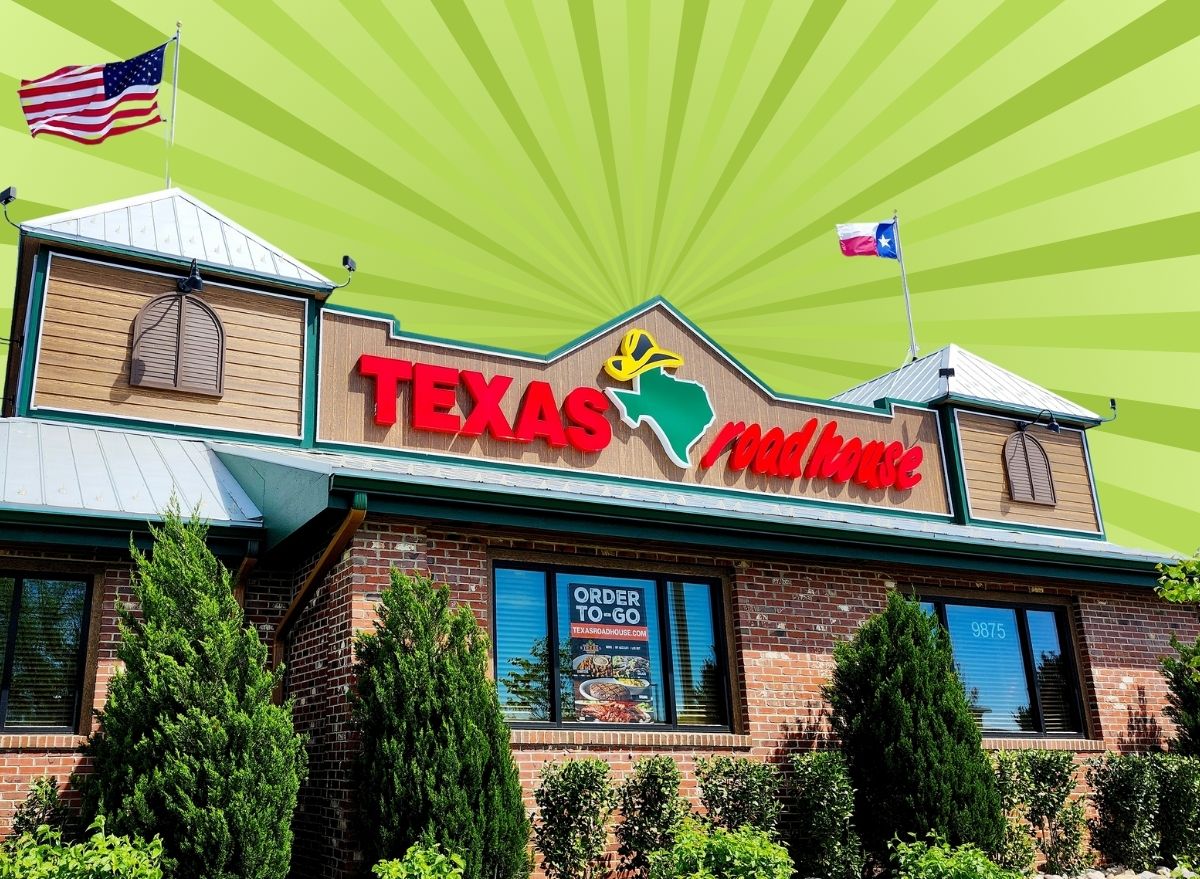
When you dine at Texas Roadhouse, you can reliably count on a few things: a basket of free, fresh-baked dinner rolls to start, a lively but relaxed atmosphere with upbeat country music blaring in the background, and most importantly, unbeatable prices on every steak on the menu.
Despite inflationary pressures like rising beef and labor costs, Texas Roadhouse is still the best bang for your buck in the casual steakhouse business. Even after raising its menu prices a total of four times over the past two years, the popular honky tonk-themed chain remains a more affordable option for beef lovers than many other full-service restaurant chains, including its major rivals, Outback Steakhouse and LongHorn Steakhouse.
Currently, the cheapest steak and #1 top-seller at Texas Roadhouse, the 6-ounce sirloin, will set you back $14.49 in Parlin, N.J. That's $1.80 less than the same steak at the nearest LongHorn and $3.30 less than the closest Outback. If you prefer a more tender cut of beef, the savings are even greater. A 6-ounce filet costs $23.49 at Roadhouse—$2.30 less than LongHorn and a whopping $4.50 less than Outback. Even the noble bone-in ribeye is $2 cheaper when you order at Roadhouse versus the competition.
The difference has little to do with quality. Texas Roadhouse serves up the same USDA Choice-grade cuts as the other casual steakhouse brands. It's more about the unique ways that the Louisville, Ky.-based company operates.
Here are six factors that help to explain why the chain's so-called "legendary" steaks are so gosh-darn affordable.
Value-driven DNA
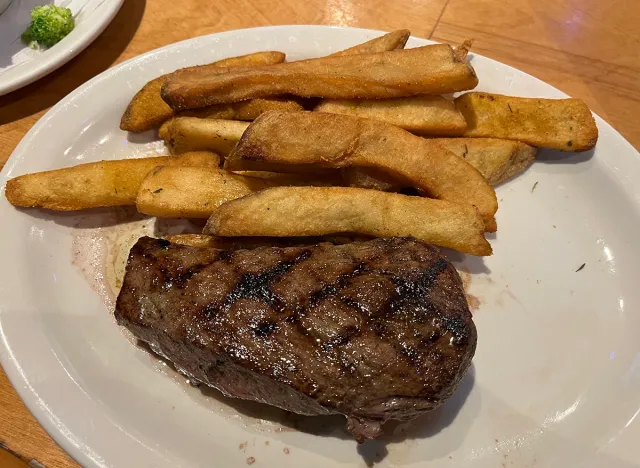
Roadhouse isn't undercutting Outback and LongHorn by accident. That was part of its mission from the beginning. In his 2021 memoir "Made From Scratch," the chain's late founder, Kent Taylor, described his original vision for the restaurant: "I wanted to have the same quality of beef that Outback and LongHorn featured at the time, but with price points more similar to Chili's and Applebee's."
Three decades after first hitting the scene in 1993, Roadhouse may now offer better price points than Chili's and Applebee's, too. That top-selling 6-ounce sirloin? It costs $16.99 at Chili's in East Brunswick, N.J., and a whopping $19.99 at Applebee's in nearby Edison, while the closest Roadhouse charges just $14.49.
The fast-growing chain is steadfast in maintaining a sense of affordability, even while incrementally raising prices. "We remain proud of our everyday value proposition," CEO Jerry Morgan told investors after announcing a modest 0.9% increase in menu prices on Oct. 24, "and believe this is the appropriate level of pricing."
One way that Roadhouse can offer these kinds of deals and still remain profitable is through "barbell pricing," an industry term that essentially means promoting both high- and low-cost items at the same time, thereby catering to a wider audience. This two-pronged approach has become a popular strategy at many restaurant chains now trying to survive in inflationary, post-pandemic America, Restaurant Business reported. But according to a study published by Harvard Business School, Texas Roadhouse was using this method as far back as 2015. "This allows them to drive traffic with inexpensive bar food and to somewhat mitigate inflation in higher grade protein offerings," the study noted.
Long-term beef supply deals
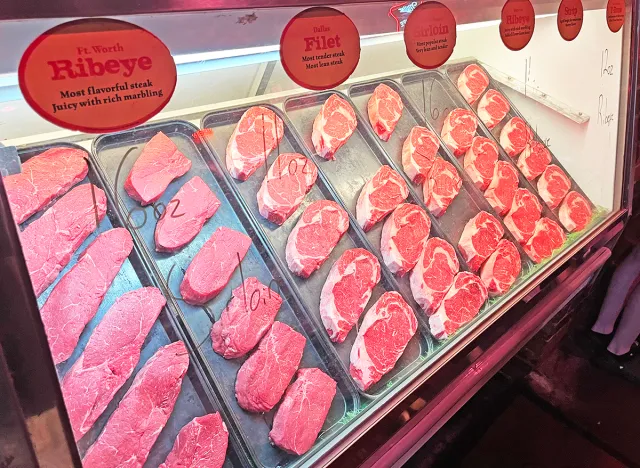
Beef accounts for roughly half of the food costs at Texas Roadhouse. To help keep its steak prices steady, the chain likes to strike long-term fixed contracts with its suppliers. According to investing site Seeking Alpha, these 24-month deals are often expensive at the outset, but ultimately pay off as beef prices go up, helping the chain to control costs.
While beef prices hit record highs this past summer, executives at Texas Roadhouse recently indicated that its costs haven't shot up as badly as anticipated. "This year has been a surprise," CFO Chris Monroe said during the Oct. 24 earnings call, "that we didn't see the amount of inflation driven primarily by beef that we expected." Moreover, the company said it didn't expect a dramatic rise in food costs for 2025, either. Michael Bailen, the company's head of investor relations, said the decision to raise menu prices by a modest 0.9% was based on a combination of "locked prices and assumptions."
Upselling is the name of the game
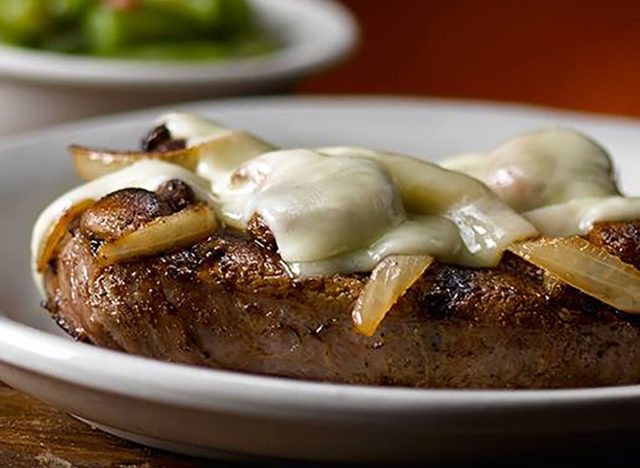
While that 6-ounce sirloin may seem like total steal at less than $15, the price can quickly inflate, if you succumb to the temptation of add-ons. Want mushrooms and onions on top? That's an extra $2.29. A slice of Jack or blue cheese crumbles? Tack on another 50 to 79 cents. How 'bout some grilled shrimp? Add $3.99. Pretty soon, that simple hunk of beef is gussied up to over well over $20.
Texas Roadhouse servers, aka "Roadies," are encouraged to upsell customers at every turn. As one employee on Reddit recently said of management, "If you don't upsell enough mushrooms and onions on steaks they get their panties in a twist." Another noted, "managers print out reports and would have convos if you didn't upsell."
The affordable steak prices may draw you in, but with some none-too-subtle nudging, you may end up ordering higher-margin items, too, like alcohol, appetizers, and loaded sides. Maybe you'll even splurge on a pricier strip or ribeye, order a few appetizers to share, and get a couple of rounds from the bar—all adding to Texas Roadhouse's healthy bottom line while still keeping its low-cost reputation intact.
Streamlined hours
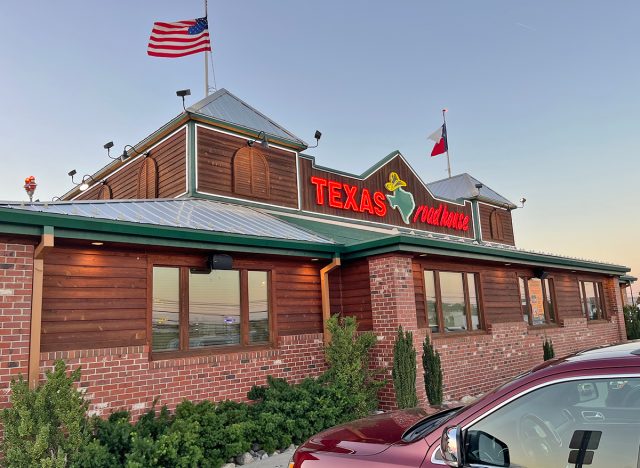
Another unique element at Texas Roadhouse is the chain's hours of operation. Unlike Outback and LongHorn, which are usually open for lunch, Texas Roadhouse doesn't generally unlock its doors until 3 or 4 p.m. on weekdays. This dinner-only model "reduces our real estate costs since we do not have to be located in high-traffic business districts," according to the chain. While the steakhouse does open earlier on weekends—and even on Fridays in certain locations—the reduced operating hours still means lower overall expenses, making it even easier to keep steak prices as cheap as possible.
A consistent menu
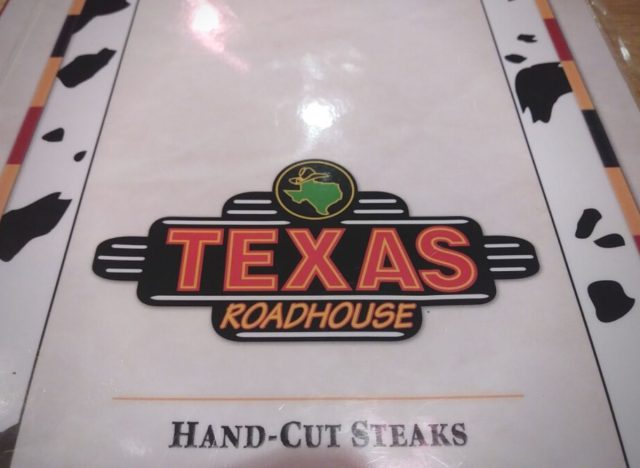
Other chains constantly roll out fancy new menu items and limited-time offerings to give customers ever more reasons to come back, like Outback's recent Great Barrier Eats menu. Conversely, Texas Roadhouse rarely, if ever, does this. The "legendary" steaks you saw listed on the menu last year are the exact same cuts you see today. The only noticeable difference is the slight uptick in price. When asked in 2018 about the last big menu change, a company spokesperson told FSR Magazine about the "one of the more recent" additions of a steakhouse filet salad, noting, "That's been four or five years."
This stubborn resistance to fixing what's not broken undoubtedly saves the company money on additional food costs and promotional expenses. Texas Roadhouse largely eschews national advertising, anyway, meaning even more cost savings are passed down to you, the budget-wary consumer.
Sheer Volume
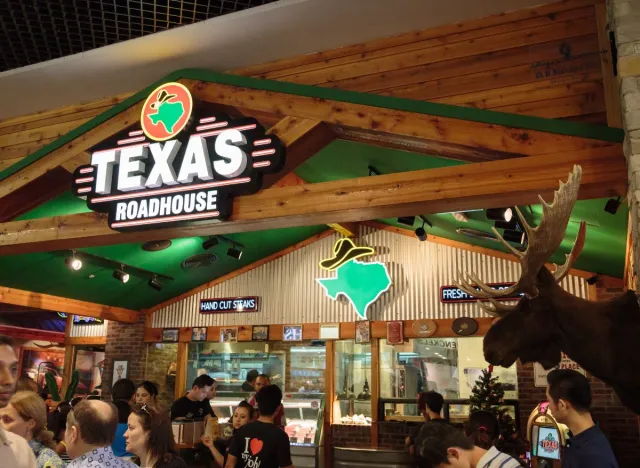
At a time when many restaurant chains are shedding customers, Texas Roadhouse is still packing 'em in, night after night. The fast-growing steakhouse chain reported an 3.8% increase in traffic during the most recent quarter with the average check total rising 4.7%. According to Restaurant Business, the chain racked up $4.8 billion in revenue last year—more than LongHorn, Outback, Chili's, Applebee's, and every other major casual-dining brand with the notable exception of Olive Garden.
Texas Roadhouse is currently on pace to surpass the $5 billion mark in 2024.
With sales volume this high, the steakhouse chain can afford to keep steak prices low and still reap a healthy profit for operators and investors alike. The strategy is simple: bring in more customers, keep them happy with good food at affordable prices, and watch the tremendous volume make up for more modest per-item yields.
So, the next time you're digging into one of those curiously affordable, "legendary" steaks, you can rest assured that the steakhouse isn't skimping on quality. The pricing is just part of the plan.









